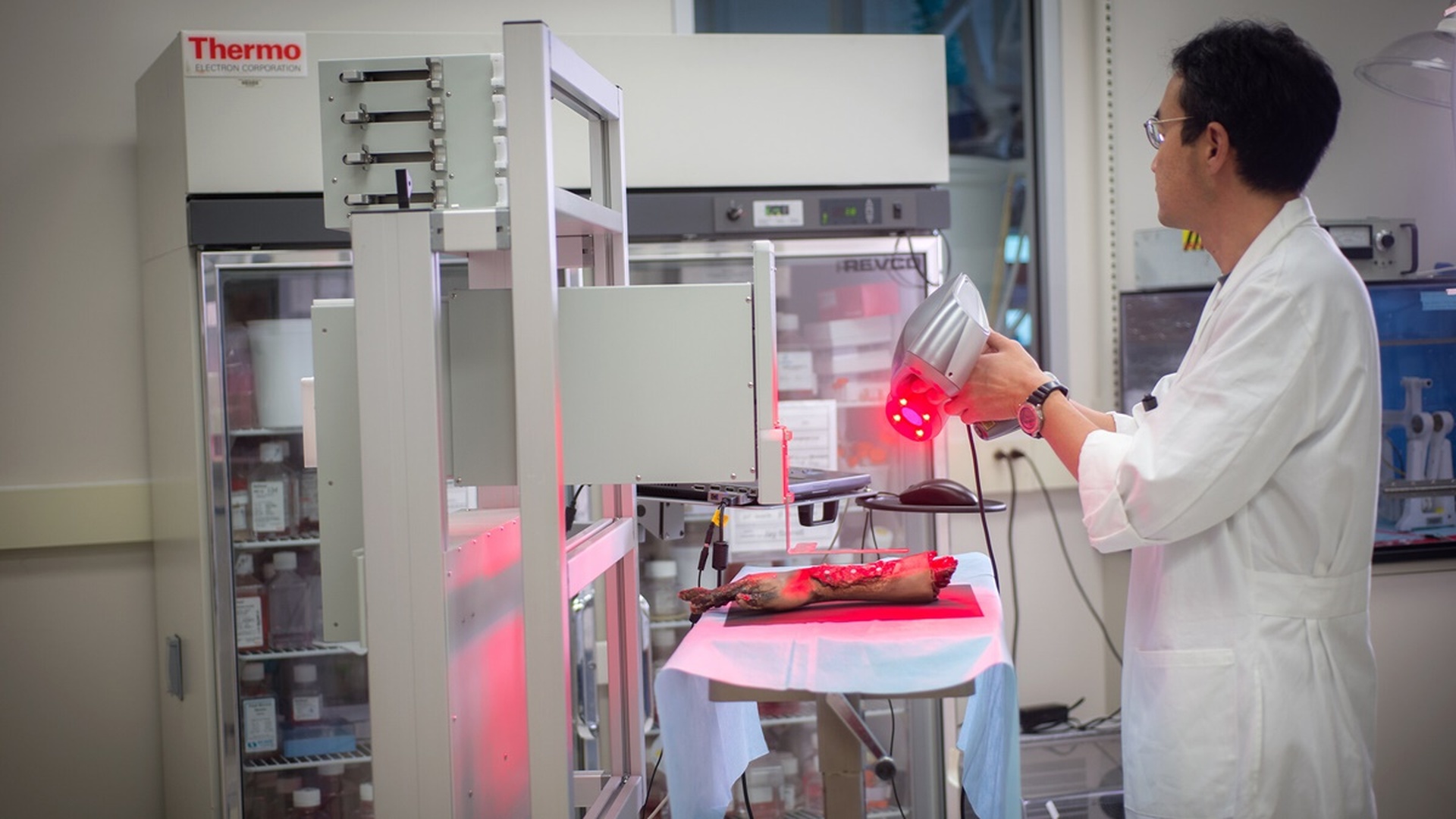NEWS
Mobile 3D-bioprinter will print a new skin right over wounds

The idea of printing large quantities of human skin for the treatment of extensive injuries arose back in 2014. It was originally planned to simply establish the process of obtaining skin in unlimited quantities so that doctors could cut off the suitable fragments and transplant them. But now at the Institute of Regenerative Medicine, Wake Forest has developed a 3D printer that prints the missing skin directly onto the wound using the patient’s own cells.
It all starts with a biopsy to get skin samples of a specific person that are guaranteed to take root after a transplant, without any risk of rejection. The operation requires fibroblasts - cells that help build a structure for healing wounds, and keratinocytes - the base cells of the outer layer of the skin. Samples are placed in a nutrient medium and an arbitrary number of cells are grown, which are then mixed with hydrogel.
The resulting mixture is "ink", the working material for the 3D-bioprinter. Before printing, a three-dimensional scanning of the wound is made by a laser, its topology is studied. It is necessary that the machine correctly arranges the layers of fibroblasts and keratinocytes, plus it allows the device to spend just as much material as is needed to completely close the wound. There is no overspending of cells, and therefore there are no scars, there are no traces of the operation, everything grows together as it was originally, before the injury.
Testing technology in laboratory mice was successful, although they made adjustments to the concept of treatment. In fact, this technique speeds up the wound tightening many times, forcing the formation of skin by adding ready-made cells instead of their long-term growth by the body itself. But first you need to heal the wound, fix the problem that caused it, and then close the damaged area. All this will require new research and tests - however, now they will be conducted in public.





